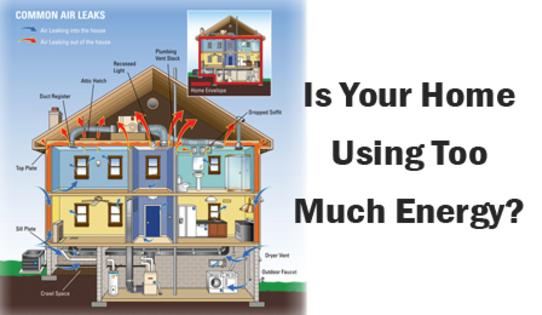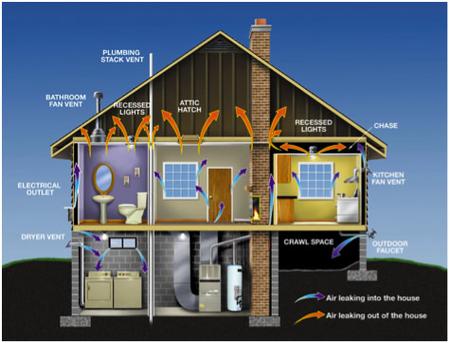 Most homeowners want a house that is safe, comfortable and easy to heat and cool.
Most homeowners want a house that is safe, comfortable and easy to heat and cool.
Green homes begin with the the many parts of a house so they work together as a whole.
Heat and Cold move from one object to another; air and moisture move inside our homes.
Green building practices, as well as the selection of appropriate building materials, revolve around a few basic principles of science.
What’s key:
-A house is a system of interrelated parts.
-Energy loses some of its potential each time it is converted from one form to another, which helps explain why passive solar heat is much more efficient than electric heat.
-Form follows function when it comes to design, meaning that construction should be tailored to the environment that which the house is built.
-Air leaks in the building envelope represent a significant loss of energy and open the door to moisture damage inside wall and ceiling cavities.
-Controlling the movement of heat, air and moisture involves every part of the building and everyone on the building team.
 As much as 40% of a buildings energy is lost due to air infiltration. Gaps, holes and air leaks—which can all be prevented—can make energy bills unnecessarily high and let valuable resources go to waste.
As much as 40% of a buildings energy is lost due to air infiltration. Gaps, holes and air leaks—which can all be prevented—can make energy bills unnecessarily high and let valuable resources go to waste.
Spray foam offers a solution: it performs as both insulation and an air sealant, or air barrier, closing those nooks and crannies that let air escape and add dollars to monthly energy bills. The U.S. Environmental Protection Agency’s (EPA) Energy Star program estimates that by adding insulation and sealing air leaks, you could save up to 20% on your monthly energy bills.
The U.S. Department of Energy estimates that 56% of the energy used in a home goes to heating and cooling. Your home’s heating, ventilating, and air conditioning (HVAC) system has a big effect on your utility bills and your energy consumption. Maintaining an optimal HVAC system can make your home more energy efficient. Spray foam insulation can help reduce the workload on your HVAC system thanks to its high R-value and effectiveness. In fact, with spray foam, HVAC sizing can be reduced as much as 35% without the loss of efficiency and comfort.
SPRAY FOAM AS AN AIR SEALANT
Air leaks can waste energy and drive up utility bills. Spray foam can be used to fill gaps and stop the leaks in many areas of a home or building. Some common spots for air leaks that can be sealed with spray foam include:
- Behind knee walls
- Attic hatches
- Wiring holes
- Plumbing vents
- Open soffits
- Recessed light, furnace flue or duct chaseways
- Basement rim joists, windows and doors
“Cool roofs” are roofs designed to maintain a lower temperature than traditional roofs. They are light in color and reflect sunlight instead of absorbing it, which allows heat to escape. SPF applied to the roof of a home or building can provide cool roof performance when topped with a protective, reflective coating. Along with reducing air conditioning needs, spray foam helps protects the roof, potentially extending its lifetime.
Spray foam roofs also reduce thermal shorts or bridges. Traditional roofing materials must be nailed down or fastened to the roof deck with metal fastenings, creating a thermal short or bridge from the conditioned building interior to the outside roof deck, which can reach temperatures of up to 180 degrees in the summer. Spray foam roofing does not require metal fastening since the foam bonds directly to the roof deck in a continuous layer of insulation.
When having SPF insulation installed in your home or building, EnergyProInsulation Building Professionals can educate you on the installation process.
Getting a home energy assessment can help you take control of your energy costs. It can identify where your house is using the most energy and which improvements would have the biggest impact on your bottom line. Heating and cooling costs frequently account for 50% of residential energy bills.Identifying your energy waste can lead to big savings.
Visit: nyserda.energysavvy.com to get an energy assessment
